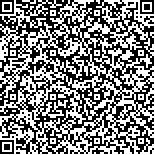下载中心
优秀审稿专家
优秀论文
相关链接
摘要

组合表面布拉格散射模型CSBS(Composite Surface Bragg Scattering)由布拉格(Bragg)散射模型和几何光学模型组成,是海洋微波散射的经典模型,可用于星载合成孔径雷达SAR(Synthetic Aperture Radar)海表面风场反演。研究指出,Bragg散射模型仅适用于中等入射角条件,几何光学模型则更适用于小入射角情形。然而,如何确定中等和小入射角的阈值,即CSBS模型最优入射角的选取目前尚无定论。基于142景成像于美国东西海岸和中国东海的RADARSAT-2精细四极化SAR影像数据和海洋浮标数据,本文提出了一种最优局地入射角查找算法,分别对VV和HH极化SAR数据进行最优入射角阈值的选取。结果显示,局地入射角
Composite Surface Bragg Scattering (CSBS) model is a classical ocean microwave scattering model, which can describe the Normalized Radar Cross Section (NRCS) of microwave backscattering from a rough ocean surface. The CSBS model includes a Bragg model and a geometric optics model and can be used to retrieve ocean surface wind speed from spaceborne synthetic aperture radar (SAR). Compared with Geophysical Model Function (GMF) developed by methods of empirical statistics, the CSBS model works well at all microwave frequencies. Reports showed that geometric optics model is most suitable for small local incidence angles, whereas Bragg model tends to be best for moderate incidence angles. In other words, for local radar incidence angles that are smaller than a given angle setting, the two-scale backscattering mechanism of the sea surface is replaced by a geometric optic solution for specular reflection. However, determining the threshold for small and moderate local incidence angles is still an open question. The local incidence angle search algorithm is proposed and developed to find the optimal radar incidence angle at co-polarized (VV-and HH-polarized) channel. The modeling data for the local incidence angle search algorithm include wind speed data retrieved from 142 Canada RADARSAT-2 fine-beam quad-polarized SAR images in the east coast of America, the west coast of America, and the East China Sea. Ocean surface wind speed measured from the National Data Buoy Center (NDBC), the Environment and Climate Change Canada (ECCC) and the China State Oceanic (SOA) are considered reference wind speed. The conclusion shows that the optimal setting of 14 and 16 degrees is the optimal radar incidence angle for ocean surface wind speeds retrieve from CSBS model at VV-and HH-polarized RADARSAT-2 SAR images. Based on the optimal incidence angle setting, ocean buoy-measured wind speed data are considered references, and ocean surface wind speed is retrieved from VV-and HH-polarized RADARSAT-2 SAR data using CSBS model at 0—15 m/s wind condition. Results show that the ocean surface wind speeds retrieved from RADARSAT-2 fine-beam quad-polarized SAR data using CSBS model at VV- and HH-polarized channel are in good agreement with in situ ocean buoy wind speed. The root mean square error (RMSE) of SAR-retrieved wind speed and buoy-measured wind speed are 2.15 m/s (VV-polarized channel) and 2.32 m/s (HH-polarized channel), and the correlation coefficients are 0.79 (VV-polarized channel) and 0.75 (HH-polarized channel), which are statistically significant at 99.9 significance level. The conclusion of this article indicated that the optimized incidence angle setting of the CSBS model found in our study has good applicability and reliability under low-to-moderate ocean surface wind speed (no higher than 15 m/s). From case comparisons of the CBS model with RADARSAT-2 SAR images, the optimized small incidence angle setting of 14 and 16 degrees of the CBS model is suitable for the microwave frequency of the C-band with co-polarization. More studies on the optimized small incidence angle setting of the CBS model and its application in other microwave frequencies, cross polarizations, or high sea states will be considered in future investigations.

